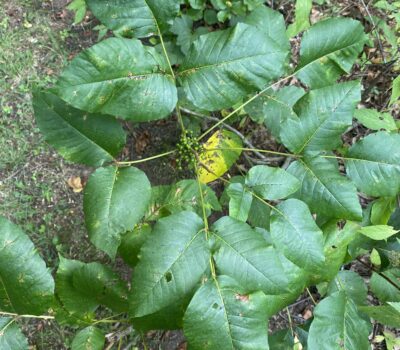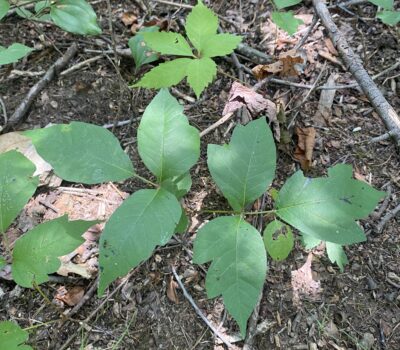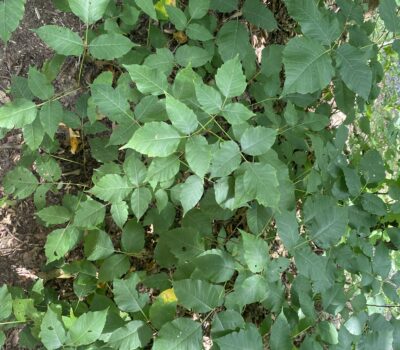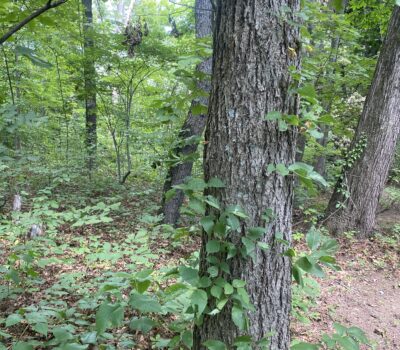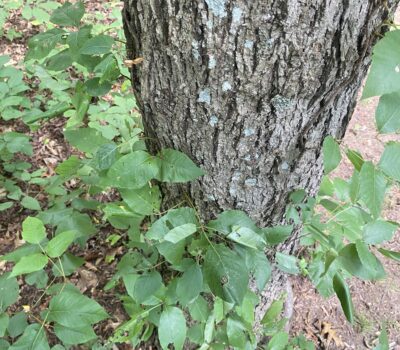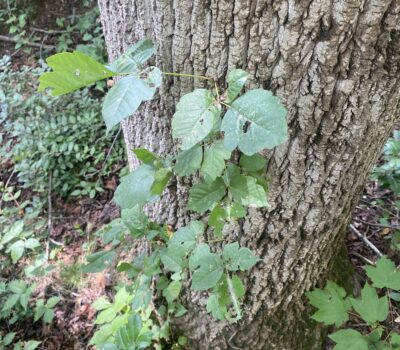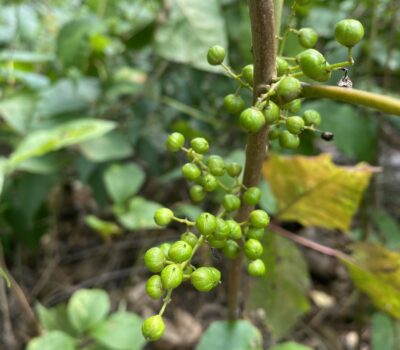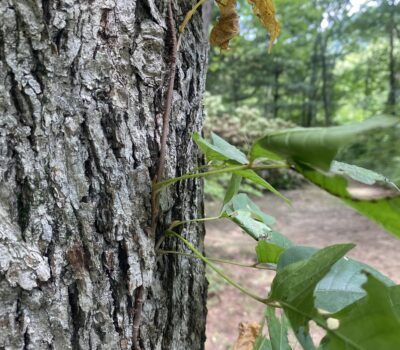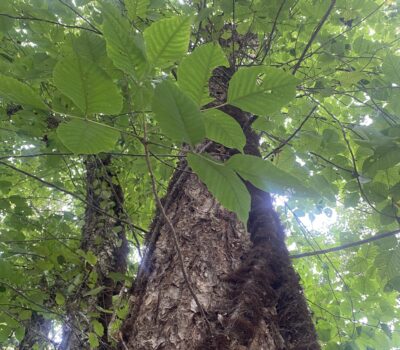Ask a Naturalist: Poison Ivy Awareness
Have you ever gone on a hike and returned home feeling itchy and developing an unexpected rash? If so, you might have encountered poison ivy! People of all ethnicities and skin types are at risk for developing poison ivy dermatitis. About 50% of people develop signs of poison ivy dermatitis after coming in contact with urushiol (allergenic substance found in poison ivy). Symptoms usually develop within 4 hours to 4 days after exposure.
Poison Ivy grows in most of the United States except for Alaska and Hawaii. It can grow as a vine or a small shrub. You can identify it by looking at the leaves. “Leaves of three, leave them be.” The leaves have three leaflets that look glossy and have smooth or toothed edges. The leaves change colors with each season. They can be reddish in the springtime, green in the summer, and yellow, orange, and red in the autumn. Poison Ivy also has whitish flowers and yellowish berries.
Urushiol oil in the plant can cause itching, red rash, and blisters when it touches a person’s skin. The rash is not contagious, but oil can stay on surfaces that have not been washed and cause another person’s skin to react. The oil can remain active on the surface of objects for up to 5 years! Rashes will develop only in areas where the oil has touched the skin so it will not spread to other areas by scratching. Burning poison ivy also produces smoke that can cause lung irritation, if inhaled.
Here are some tips on how you can prevent a reaction to Poison Ivy:
- Learn to identify poison Ivy so you can avoid it.
- If you think there will be poison ivy in an area where you will be walking or working, wear long sleeves, long pants, and boots. If you’re gardening, wear long gloves.
- If your pet has been playing in an area with poison ivy, wash them with pet shampoo and water using rubber gloves. Most pets do not react to poison ivy but if the oil stuck to their fur, it may cause a reaction in someone who pets them.
- If you think you have touched a poisonous plant, wash your skin with soap as soon as possible to prevent itching and rash.
- Using barrier creams such as lotions containing bentoquantum may offer some protection.
If you are not able to prevent getting a rash from poison ivy there are different ways it can be treated. If symptoms worsen, it is always recommended to see a doctor. If you develop blisters, try not to scratch them to prevent bacteria from your fingernails from causing an infection. The itch, rash, and blisters usually disappear within several weeks without any treatment. You can rinse the skin with rubbing alcohol, a poison ivy wash, or degreasing soap. Oatmeal baths may also relieve itching. The FDA has several tips for treatment at https://www.fda.gov/consumers/consumer-updates/outsmarting-poison-ivy-and-other-poisonous-plants
There is poison ivy all over the Gateway Nature Preserve. It is growing in the Forest Discovery Trail, and near the pollinator garden and meadow. Poison Ivy is a native plant to North Carolina. It is an important food source for wildlife. The berries are eaten by resident birds in the winter when other food sources are scarce. It is mainly spread by birds. The seeds pass the birds’ digestive system undamaged and are distributed this way. Bees and flies pollinate the flowers in spring. Moth caterpillars and other insects also feed on poison ivy leaves. Some larval insects use leaves to enclose them for their pupa stage. Poison Ivy is also an important succession plant and can help improve soil health.
Poison Ivy has ecological value, and it is an important native plant that serves as a food source for many birds and insects. It is widely spread in wooded areas in the city and in the wilderness therefore it is important to be aware of it so that we can prevent human allergic reactions that can worsen. So come out and enjoy a relaxing hike at the preserve but be poison ivy aware!
Resources:
https://www.fda.gov/consumers/consumer-updates/outsmarting-poison-ivy-and-other-poisonous-plants
https://www.cdc.gov/niosh/docs/2010-118/default.html
https://www.uptodate.com/contents/poison-ivy-beyond-the-basics/print
https://www.aad.org/public/everyday-care/itchy-skin/poison-ivy/prevent-rash
